Galaxy Science Fiction, February 1955: A Retro-Review
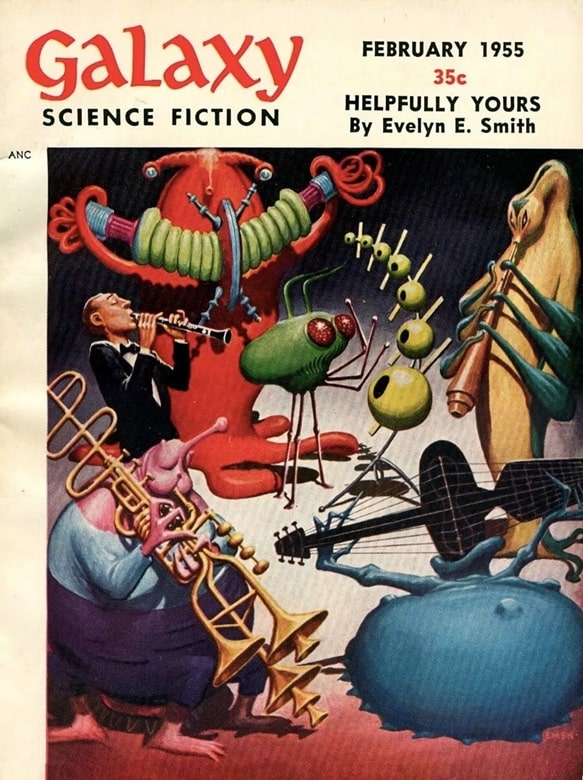 |
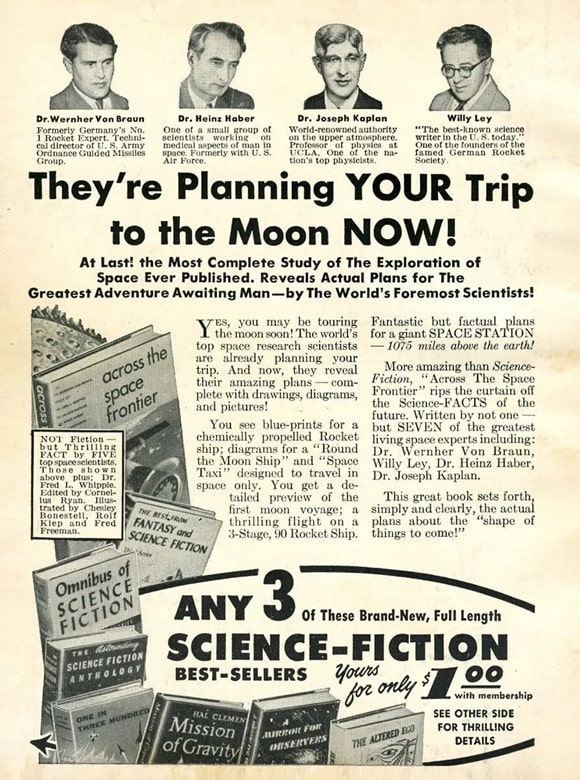 |
Galaxy Science Fiction, February 1955. Cover by Ed Emshwiller
Almost 70 years ago, the February, 1955 issue of Galaxy hit newsstands, and since I wasn’t alive, my review had to wait until now. My apologies to the authors who have been waiting. The cover is by Ed Emshwiller, titled “Chamber Music Society of Deneb.” I love his whimsical art; it’s part of what identifies the magazine as Galaxy.
“Helpfully Yours” by Evelyn E. Smith — Tarb Morfatch arrives on Earth from Fizbus — the first female of her species to do so. She’s a new journalist for the Fizbus Times, a newspaper read both on Earth and Fizbus. The “Helpfully Yours” column, which she’s taking over, answers Fizbian questions about Earth customs. Fizbian culture is as drastically different from humans as their avian appearance.
Illustration for “Helpfully Yours” by Emsh
Tarb’s editor is Stet Zarnon, who gives a wonderful initial impression both in his handsome appearance as well as his vast knowledge of Earth customs. Over time, however, Tarb realizes that the “Helpfully Yours” column is used as propaganda for repressing the Fizbian culture as much as possible. Stet’s objective is to ensure Fizbians hide and deny as much about themselves as possible while on Earth, including keeping on the ground at all times.
Smith’s story is generally lighthearted, but there are deeper messages beneath. It’s nicely written with good character development.
“The Cave of Night” by James E. Gunn — In the early days of space travel, the Air Force uses what little budget they have to send Rev McMillan into space to orbit Earth. Unfortunately, something goes wrong with Rev’s spacecraft, and he’s unable to control the rocket or receive transmissions from Earth. All he can do is transmit — talking about what he thinks and sees and knows as he orbits the planet, hoping for rescue.
Time is limited due to Rev’s finite supply of oxygen, and the Air Force doesn’t have another ship ready due to budget constraints. The entire world becomes fixated on the developing story. There’s a race against time to save Rev — to get the funding released from the government, to build a new spacecraft, to intercept his ship in time before Rev dies of asphyxiation.
Illustration for “The Cave of Night” by Mel Hunter
Gunn’s tale is one of the best I’ve read in Galaxy. It’s not the best of all time (I’d likely pick Ray Bradbury’s “The Fireman”), but it’s way up there in the top five, maybe in the top three. It’s so well put together. It captures humanity and the space age so well, in terms of possibilities, explorations, and dangers. Gunn’s flow of words drew me in. There’s so much passion in how the story unfolds; I felt myself caught up in the same hype as the characters in the story.
And then there’s the ending. I don’t want to say anything about it. I know in simply writing that I don’t want to say anything likely leads to thoughts of why and perhaps a guess as to what happens. But instead of guessing, I would urge you to read it for yourself, if you can find a copy. You could listen to the X Minus One radio drama of it, but I would recommend reading the story itself.
Illustration for “Helpfully Yours” by Emsh
“Dead Man’s Planet” by William Morrison — Sam Wilson and his young son travel to a new planet. Sam’s an introverted widower, choosing the remoteness of space to avoid people. But it affects his son and their relationship to be so isolated. It’s on this new planet, one Sam believes to be undiscovered by humans, that they find a dog.
What a title! I’d read a story for that title alone. Beyond the title, Morrison created very realistic characters that I find just as relatable in 2024 as they might have been in 1955. I think that’s due to the introspective narration style that remains tight on Sam (also known as close third-person in the writing world). Oh, and this tale doesn’t go where you think it will either.
“Open House” by J. T. McIntosh — The Visitors came and left, delivering inventions well beyond the technological age humans had reached. Uncle Egbert doesn’t trust that their intentions were humanitarian. One of the tools is a matchbox-sized device that can generate the same amount of energy as a power station. He’s convinced that with this and other new tools people don’t understand, mankind could easily destroy itself without the Visitors being directly involved, which might alleviate any morality issues they have in exterminating an entire species.
McIntosh’s tale is more on the lighthearted side. It does raise an interesting thought of extraterrestrial encounters and how conquerors could work through disguised altruism.
Table of Contents for the February 1955 issue of Galaxy
“Pythias” by Frederik Pohl — Dick works as a security guard in the United States Senate. His friend, Larry, who he’d lost touch with after the war, asks to sit in on a foreign relations debate. The day that Larry visits the Senate, a trio of terrorists attack with handguns and a grenade. Although the terrorists are quickly subdued, the live grenade rolls away from the tackled man. Dick and Larry both lunge for the grenade, but Larry reaches it first. As he smothers it with his body, it explodes. The blast knocks Larry out but doesn’t kill him, which Dick knows is impossible. When Dick later confronts Larry, he learns the truth of what happened and of what Larry can do.
This one’s a quick, fun read. And like some of the others in this issue, it has a great ending. In fact, the ending zinger came down to just three words.
“Blind Spot” by Bascom Jones, Jr. — Johnny Stark is the director of Interplanetary Relations on Mars. Earthlings and Martians are segregated, except in cases of marriage, and it’s part of his job to ensure interspecies couples understand the limitations even within marriage. Guiding harmonious relations between the two peoples is an exhausting task — one that will soon affect him personally.
I’m doing my best not to spoil the overall plot by staying vague in my description. I was a little surprised at the ending, more so because my mind filled in some of the missing details on the story that weren’t provided until the end. It’s a good technique to use to fool a reader — let them assume certain aspects about characters or setting, and then fill in the true details at a poignant moment in the plot.
The first six issues of Galaxy magazine in 1955
“Rich Living” by Michael Cathal — The planet Rejuvenal has the ability to roll back years from a human’s life — about one year every 24 hours. The company that operates the travel and accommodations is Rejuvenal Enterprises, Inc., and the price per ticket is so steep that only the wealthiest can afford to go. Curtis Delman prepares to go for his fourth visit — the most visits of anyone. His life has become a pattern of growing his law firm as much as possible for decades until he’s elderly, visiting the planet, then repeating. And now, at 387, he’s ready to reset into his youth once again.
The crew and passengers are a handful of people, and when they arrive, everything continues as it has in Curtis’ previous visits. But when a spaceship arrives to change the staff and bring fresh supplies, it crashes. The wreckage of the crash blocks the landing strip, preventing anyone from rescuing them. Their only chance is an escape rocket, which is blocked by heavy debris caused by the crash. Curtis isn’t certain they have enough days left to clear the debris before they become too young to operate the ship, and what will happen when all their years roll back?
I really liked the premise of the story as well as the characters. I knew there would be a conflict at some point, but it wasn’t what I thought it would be. I couldn’t find any information on other publications from Cathal. It’s possible this was his only publication in a major magazine, or perhaps this was a pseudonym for someone (I didn’t find evidence for that either).
This issue also featured a “For Your Information” by Willy Ley as well as Groff Conklin’s reviews in “Galaxy’s 5 Star Shelf.”
Matthew Wuertz’s project to review every issue of Galaxy magazine in order of publication began with the January 1950 issue. See all his reviews here.
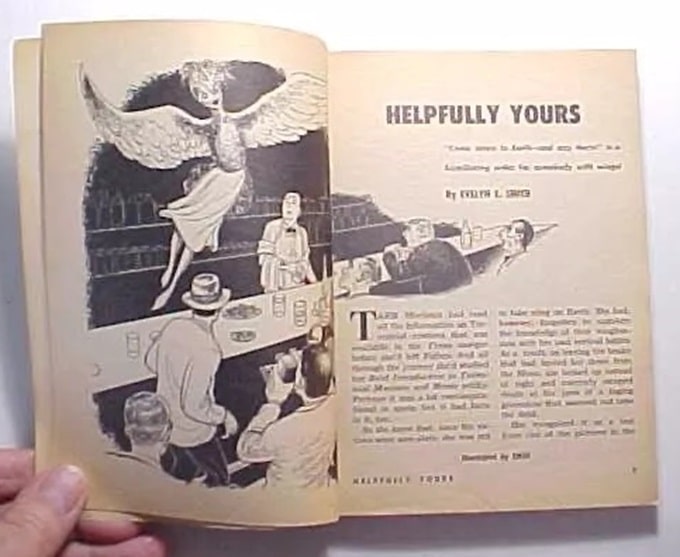
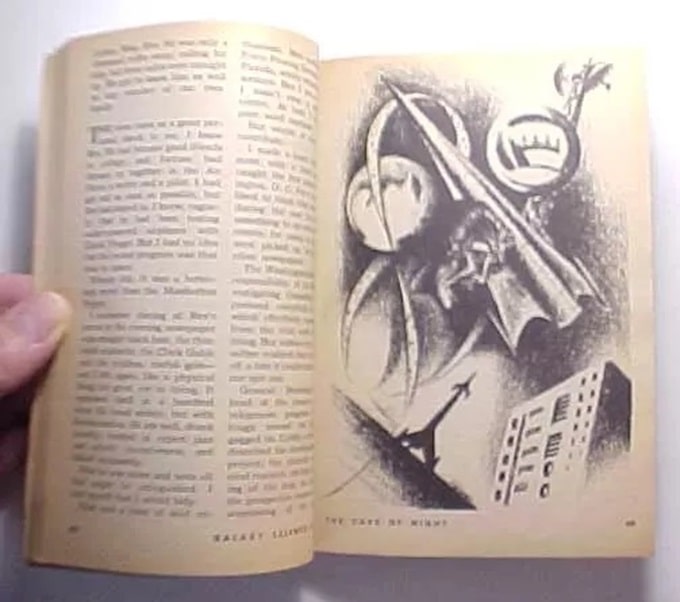
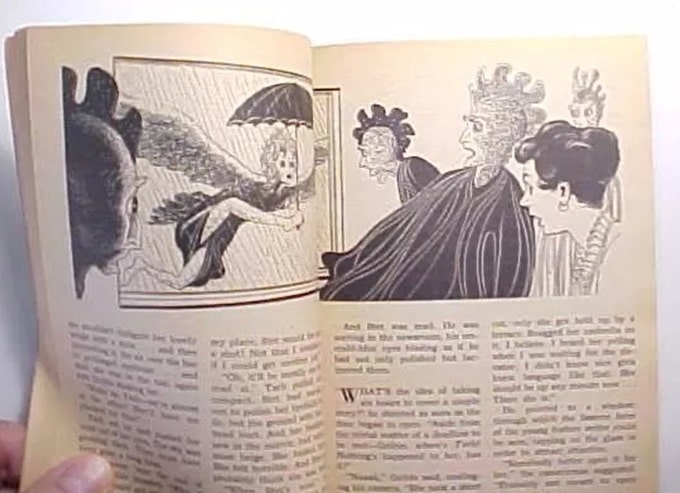
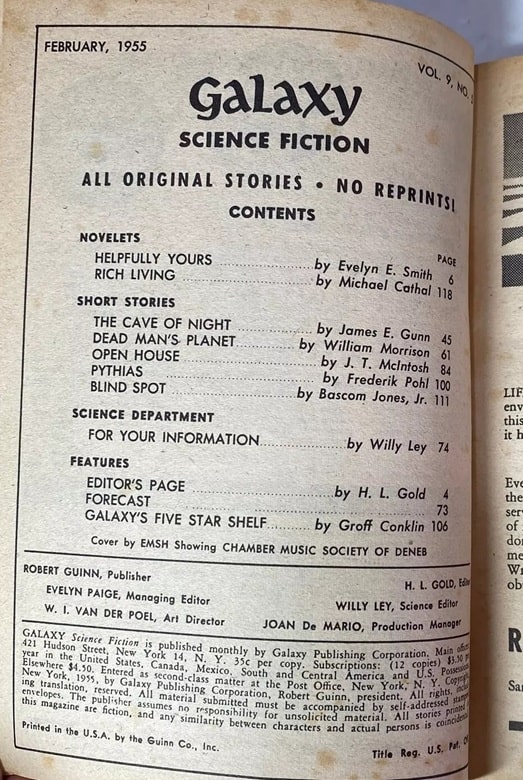
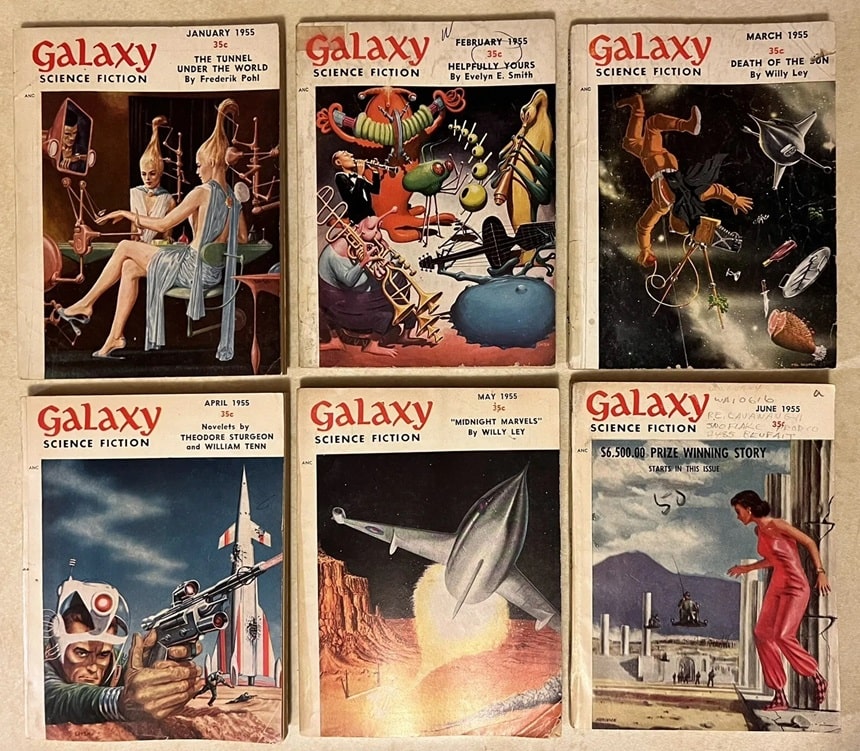
I really do make an effort not to drown in nostalgia, but c’mon – imagine having something like this show up on the newsstand every month.
No kidding! It must have been exciting back then.
Love the cover, I wonder if it influenced George Lucas’ vision for the Cantina scene in “Star Wars”? And for all her alienness, Tarb Morfatch still wears a skirt and puts on lipstick.
The cover does bear a resemblance to the “Star Wars” cantina band. Good catch!
Tarb tries so hard to follow the local customs, per the guidance of her boss, until she realizes they’re actually hurting her people. Stet Zarnon should be on the list of worst bosses in the galaxy.
An excellent review!
I had the privilege of meeting James Gunn several times starting in 2004. “The Cave of Night” is a remarkably good story. I think that X-Minus One did a great version of it, too.
Thanks, Adrian.
That must have been exciting meeting him.
There are so many good adaptations of stories for X-Minus One. I love listening to episodes whenever I have the chance to do so.